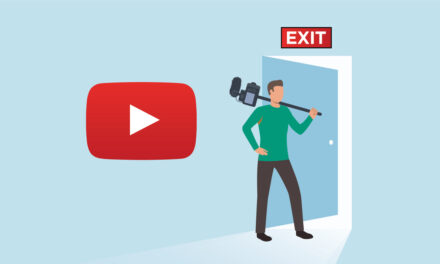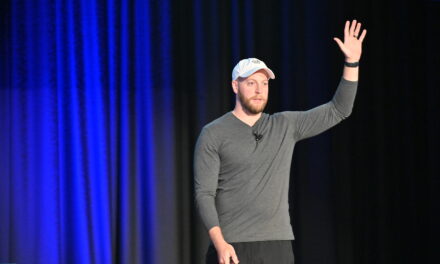The FIFA World Cup 2014 was a spectacular global event. From the eyeballs glued to screens across the globe to synchronous cheering, from the tears of disappointments to the exhilaration of victory were just some of the highlights of a roller coaster tournament. Right from the incredible Dutch victory over the Spanish to the very end, the FIFA World Cup 2014 was anything but predictable. This unpredictability made sure the interest in the tournament was sky high at all times.
An interesting tournament with a passionate digital audience made the games not just a hit on the pitch but also proved to be key for several brands to leverage the enthusiasm and cloak themselves in the football fever. Not just the main sponsors, but also those who were far from the action used the World Cup beautifully to magnify and amplify their engagements and ride on the waves that the event created. So, what were the key five lessons marketers can take from the World Cup 2014? Read here:
Impromptu Content is Your Best Bet to Go Viral
I bet, if you are in the marketing space, that a client at some point has asked you to make a campaign go viral. While, the term viral itself is subjective, it basically means a high engagement ratio on a particular topic, via means that draws attention.
Several incidents during the World Cup–such as Luiz Suarez’s legendary bite–prompted brands in the food products space, such as Snickers, to take to Twitter and Facebook to come up with one liners that were extremely witty and ultimately took the brand viral.
The other notable incident was the proclamation of Tim Howard as some sort of a super human after his performances at the World Cup. The key here was to have a few experts watching the tournament closely who were also witty enough to take advantage of the headlines.
Jump on the Social Media Bandwagon
The FIFA World Cup Hashflags, a Twitter initiative that saw hashtags convert in to flags of the country, were used (at the very least) 67.5 million times making it one of the major hits when it came to bringing the World Cup to Social Media. Starting from the quarter final stages, Twitter alone saw more than 180 million game-related tweets while Facebook was home to more than 280 million status updates regarding the World Cup. Those brands, which were active on Social Media during this time and ran integrated digital campaigns, such as Adidas and Coke, really benefitted from the huge audience presence and interest levels in the event.
Adidas alone summed more than 5.8 million followers on Social Media platforms combined like Twitter, Instagram, Facebook etc on their World Cup Specific handles like @banzinga. Extensive use of promoted tweets, purchased trends, promoted posts as well as a good balance stuck with UGC content saw brands like Coca Cola, Budweiser and Visa earn healthy by having a sound digital participation.
The Importance of Being Graceful in Defeat
Often in the heat of competition and the race to come first, marketers overseeing brands are known to lose it when a defeat knocks on the door. This may lead to mockery or just plain distasteful content. The World Cup 2014 showed how important it is to be graceful in defeat.
The best example of this was when KLM posted a tweet saying Thank you and Goodbye to the Mexican team after its defeat at the hands of Netherlands, complete with a picture of the departures terminal pic. AeroMexico took the initiative to be graceful and tweeted saying it was proud of the team’s performance and waiting for its heroes with a picture of an arrival terminal.
While KLM was seen as the bad guy in the whole story, garnering a lot of negative sentiments, AeroMexico was suddenly in everyone’s good books. Therefore, despite the presence of gruesome competition and the heat of the moment, it is imperative that we stay graceful and do not go out with anything that may hurt the sentiments of others. While good banter is always fun, it is necessary to know where to draw the line and take it on the chin like a good sport.
Sponsorship May Not Be as Important as it Once Was
Several brands such as Pepsi and Nike took on various ambush-marketing campaigns to leverage excitement during the World Cup. While the major sponsors such as Coca Cola, Adidas, Budweiser, and VISA earned their share of eyeballs, it was brands like Nike–with visually appealing content on platforms like Vine or Youtube or Paddy Power with their Tweet of Neymar holding a 7UP can after Brazil’s defeat to Germany–that really left a lasting impression on the audience.
The fact that most of these brands were not associated with any one team in particular meant they could go absolutely bananas with the content without fearing a backlash of any sort.
The smaller brands used this opportunity to make a name and we saw several twitter accounts really flourish with good content during this World Cup. However, Adidas showed that all is not lost for official sponsors as it teamed up with likes of Twitter to give fans a behind-the-scenes look into the teams and players that it had sponsored in the World Cup. No wonder, Adidas was one of the few main sponsors that really came out with its flags flying high as it created a value for its audience without restricting them to the same old boring captions and multimedia content.
Localization Combined with Storytelling are Key to Emotional Connection
You may remember the Google commercial where a Pakistani and an Indian friend are reunited for an occasion with the help of technology. The reason the spot connected so well with the audience was because of the element of localization with a strong story behind it. For the World Cup, Coca Cola produced a video titled, “One World, One Game – Brasil (Brazil), Everyone’s Invited – 2014 FIFA World Cup” as an initiative to put behind the problems like racism and discrimination that have plagued the host country, as well as encourage tourism.
The video connected the local event to a strong message through the story portrayed, which lead to people seeing the brand in a totally new light. Picking up a local issue, amplifying it, and building a story out of it, is usually a good recipe for marketing success.
Those were the five key marketing lessons that we picked up from the FIFA World Cup 2014. Do you agree or do you have a lesson of your own? Let us know in the comments!














